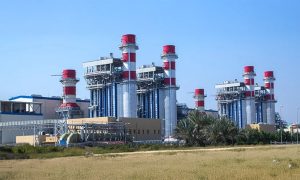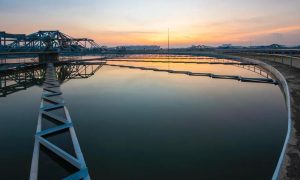The tipping point
Intermat returns to a much changed European market but does the new generation of technology reflect the challenges facing the old world?

Intermat returns to a much changed European market but does the new generation of technology reflect the challenges facing the old world?
2011 was a good year in construction – as long as you were a manufacturer. Caterpillar, JCB, Doosan and many others had a great 12 months – JCB even recorded its best-ever – riding on booms in the emerging markets.
Their performance was unfortunately not reflected in the state of many of their home markets. Even as backhoes and excavators flooded out of factories and into the hands of contractors in Brazil, Saudi Arabia, China and India, the newspaper stands in North America and Europe were painting a bleak picture of failing government spending plans and economic meltdowns.
With the Pre-Intermat event taking place in January and the biggest event of the year due to return in April, manufacturers face an uncertain future in the traditional markets.
A show for the French market that also poses as a shop window for the Western Hemisphere, it will be packed with the latest and newest machines, the question is how many of those will be going to Munich, Madrid and Maine.
The dilemma for the organisers and the exhibitors of what is considered a regional event that has gone global will be to balance out the need to roll-out their kit while accepting that their main customers will be taking long haul flights to get there.
A new study by credit insurance company Coface highlights this problem.
“The situation of companies in the construction sector closely reflects the world, regional and national economic trends,” begins the report. “At a time when the world economy is characterised by divergences between countries, with a recession in the euro zone, there are significant disparities between countries and subsectors. The construction sector was badly hit by the 2009 crisis, and a large number of payment incidents were still occurring in 2011.”
The eurozone crisis has demonstrated that within Europe it is impossible to look at the region as a single entity. Germany was booming at the beginning of 2011. Greece on the other hand, well, you know the rest.
According to Coface, companies have to face up to the intensity of activity in the construction sector varying wildly according to the impact of the crisis on the economy of the concerned country and according to sensitivity to economic conditions that varies from one subsector to another.
The Middle East is prime example of construction activity being strong in emerging markets that are making up for lagging development, “and this is particularly favourable to certain subsectors, such as public works and private and institutional non-residential construction”.
Conversely, activity in the developed markets such as Europe and North America is either moderate or stagnant, with particularly large disparities in the residential construction sector linked to differences in demographics, economic environments, credit terms, fiscal legislation, stocks of vacant housing, and prices, says Coface.
Coface’s report is illuminating as it is not examining production volumes and restructuring benefits but the effect of a lack of liquidity in these markets.
“This fragile and variable economic climate, combined with changes in orders from the public sector and regulations as well as fluctuations in both costs of materials and demand, explain the increase in payment incidents during the early months of the crisis in 2008 and again from October 2011 onwards.”
The good news is that after a three-year decline and a 17% drop in activity over the period, the European construction sector at last almost stabilised in 2011, particularly in the residential subsector, despite disparities between countries.
In a downturn decimated market, European countries can now be divided into three groups. The first group is the one where construction has suffered the most, and “where the cleaning up will take some time”.
These countries: Ireland, Iceland, Spain, Denmark, the Netherlands, Greece and Central Europe, have been affected by significant excesses in pricing and supply, and keep seeing a large number of payment incidents.
The second group, which includes manufacturing powerhouses United Kingdom, France, Belgium and Italy, have suffered less from the crisis and business even bounced back in 2010. Despite this, a new decline has set in due to the persistence of excessively high prices. Payment incidents are still widespread, particularly in the UK where the number of corporate bankruptcies is the most significant.
In France, companies face tough competition and fight to win contracts even if this means sometimes tightening their margins while taking into account price increases for raw materials. There were fewer bankruptcies in the first quarter of 2011 than in the first quarter of 2010, although the number remains much higher than before the crisis.
The third group is made up of European countries where the crisis has not affected the construction sector: Germany, Austria, Norway, Sweden, Finland and Poland. Despite this Bankruptcies are nevertheless higher in construction than in other sectors, mainly affecting companies whose activity is regional and which work in a single sector.
For 2012, Coface forecasts a very modest advance in construction in Europe, if the upturn of the housing segment continues.
“The construction sector will, however, be affected by austerity plans. Public works and institutional building are expected to stagnate under the influence of budget restrictions. Construction of business and industrial premises is likely to be affected by economic uncertainties.”
In the United States, the report continues, falling prices combined with rising costs have weakened the entire sector.
“Investment in construction fell by 2% in the first 11 months of 2011. Although the decline affects most subsectors, the new building segment has been especially weakened. Non-residential construction also continues to suffer due to budget difficulties of the States and Cities.
“In Canada, the recovery that began in early 2010 explains the low level of payment incidents recorded by Coface. A sharp slowdown is nevertheless expected in the housing segment in 2012 following the introduction of more stringent credit access conditions.”
Major releases
With yet another wave of emission regulations incoming and the industry in a haste to adapt to a radically different commercial environment it is unsurprising that many of the launches once again reflect a tightening in spending and a need to boost productivity and efficiency.
At a time when Chinese manufacturers obsess of being bigger, North America and European minds are focussing on more bang for your buck or indeed Euro.
Volvo has in the past chosen the event to set its benchmarks for the next three years. While there are no great surprises in store this time around, Volvo stand will showcase 12 new machines for 2012, including the ECR145D and ECR235D reduced radius excavators, the new EW range of wheeled excavators and the heavy duty EC380/480D excavators, as well as new wheel loaders and road machinery products.
Volvo will also highlight its advanced engineering solutions, mobile high-tech diagnostics that allow customers to accurately calculate their costs, and Volvo Financial Services offerings. The Volvo Eco Operator programme will be on display, as well, demonstrating a safer and more environmentally sensitive way of training operators.
Fellow Swedish company Sandvik Construction will also be demonstrating the latest developments from its product range, but is choosing to push its own commitment to customers and their specific business requirements.
According to Satu Ramo, marketing communications manager for Sandvik Construction: “The Sandvik Construction range of equipment enables our customers to process materials from virgin rock right through to demolition materials that can then be recycled for continued use.
“This customer-focused approach will see us unveil some new and exciting products and services for the quarrying, demolition, road building, civil engineering, recycling, aggregates and tunneling industries.”
While the complete range to be shown has not yet been revealed it is understood that Sandvik will have its QI 240 mobile impactor, BR 3288 breaker, DP 1500i drill rig, rock tools and screening media on display.
Italian company CIFA, which has been acquired by XCMG since the last Intermat in 2009, will introduce a new pump that it says has been tailored to the needs of the French market.
The new MK-24 concrete pump has a detachable pumping system with rotor. It is equipped with a three-section distribution boom with a Z-fold system and 100mm pipes. As the pumping unit is detachable, the rotor can be unhooked to increase the concrete load in the drum. This has been developed to suit the needs of stomers wanting to use a peristaltic pump rather than a traditional piston pump during pumping phases.
In addition, the concrete pump with rotor has been designed for ease and speed of cleaning and to prevent excessive waste of material. CIFA claim that the MK-24 with rotor, which can be mounted on a four-axle chassis, is also easy to position and so is suited to working on cramped sites such as restoration projects in city centres.
Among the JCB machines on show will be the 550-80 Loadall. The 550-80 is JCB’s highest capacity Loadall and it has been specifically designed for bulk handling operations in heavier duty applications such as loading duties with a bucket and materials recycling and waste handling operations. Key features of the 550-80 include an 8.1m lift height with a 4.99tonne lift capacity, a 97kW engine and 140 litres/min variable flow hydraulics and high-flow pipework for optimised cycle times.
With loading operations in mind, the 550-80 features high dump and roll-back angles of 46° and 34° respectively. This is designed with material retention and stockpiling in mind for efficient lorry or hopper loading. The model is also available in a Wastemaster specification. The inner boom of the 550-80WM uses a splayed nose design to maximise structural integrity while also incorporating Z-bar bucket linkage. This system provides 6.5tonnes of breakout force – an increase of more than 50% on the current 541 Wastemaster. The low boom line has been designed to aid all-round visibility.
Turkish company Hidromek will be unveiling its HMK220LC crawler excavator narrow chassis. Weighing up to 37t, the machine comes with a two-piece boom and is part of the newGen Series Range.
Featuring a state-of-the-art control panel, the 220LC provides versatility, reliability, very low fuel consumption, easy maintenance and operator comfort due to its spacious cabin. The machine’s four-cylinder Isuzu engine produces a maximum power of 120.8kW. The 220LC also has a boom reach of 5.8m and a standard model bucket capacity of 1m³. Operating weight on the standard crawler excavator is 22.3kg, and 22kg on the 220LC narrow chassis machine.
The Terex MC1000 cone crusher is the first of a new modular product line. This consists of several pre-designed static and semi-static crushing and screening ‘plug and play’ modules. Key features include: the Terex 1000mm cone chamber, which handles feed material to enable attrition crushing; a roller bearing design that improves crushing efficiency; a hydraulically adjustable closed side setting; and a weather protected, robust, user friendly control panel.
Each module arrives in large containerised pre-wired sections that bolt together with basic tools allowing for fast and easy setup. The modular product line will allow customers to create a custom plant that provides the productivity they want to suit any particular application across the aggregates and mining sector.
Jason Talbot, Terex MPS global product line director, said: “The new Terex MPS Modular Product Line represents a move away from traditional machinery production methods. It is designed in response to demand from the materials processing market, not just in France or Europe but globally. We look forward to meeting with customers and discussing the features and benefits of all our products at the 2012 Intermat exhibition.”

























